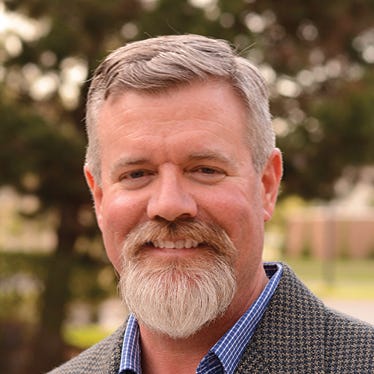
She held my hands tight and said she was ready, knowing the shot was coming. The nurse precisely and efficiently administered the jab. My baby girl went rigid with shock. But before a tear formed in her eye, the band-aid was applied, and she said, “I’m OK.”
The little braveries of our children make us proud.
“That wasn’t so bad,” I said to my four-year-old daughter, Charlee.
“Yeah, just think about how bad it was 100 years ago,” the nurse said, off handedly.
“What do you mean?” I said.
“The Spanish Flu,” she said.
Charlee and I received our flu vaccination in early December 2018, and I was unaware, until the learned nurse taught me, that we were in the midst of the centennial anniversary of one of the deadliest, worldwide epidemics in human history.
Of course, we all know a bit about the Spanish Flu — heard of it at least, but what I didn’t know about it was phenomenally a lot. One thing that struck me was just how recent the epidemic took place. My granddaddy, now passed three decades, was a five-year-old Georgia farm boy when the Spanish Flu was at its most virulent.
According to a 2004 paper about the Spanish Flu’s origins published in the U.S. Department of Health and Human Service website archives, “The 1918-1919 influenza pandemic killed more people than any other outbreak of disease in human history. The lowest estimate of the death toll is 21 million, while recent scholarship estimates from 50 to 100 million dead. World population was then only 28 percent what is today, and most deaths occurred in a 16-week period, from mid-September to mid-December of 1918.”
For as long as people have huddled together in a community, microbial contagions have plagued man, but nothing matches the gruesome gusto of the Spanish Flu. And spoiler alert, the Spanish Flu epidemic 100 years ago didn’t originate in Spain, but more on that in a minute.
The number of deaths is staggering.
If the same percentage of people who contracted and died from the Spanish Flu 100 years ago was applied to the total world population now, it would equate to as many as 400 million deaths, or more than the population of the United States.
The epidemic came in two waves during 1918 and 1919. For decades after, the scientific community debated on where the flu began. Where was its ground-zero? All agreed that World War I contributed greatly to its unusually deadly nature as it spread through the trenches of the war, mustered strength in forts and camps across Europe, mutated into a virulent beast of a disease, and infected soldiers and civilians alike. But where was the first case or cases of Spanish Flu?
Years after the outbreak, learned academics pointed to Australia, China or France as potential origins, but John M. Barry in the U.S. Department. of Health and Human Services paper argues, with strong evidence, that ground zero for the Spanish Flu “was Haskell County, Kans., an isolated and sparsely populated county in the southwest corner of the state, in January 1918.”
He goes on to say:
Soldiers moved uninterrupted between Funston and the outside world, especially to other Army bases and France. On March 18, Camps Forrest and Greenleaf in Georgia saw their first cases of influenza and by the end of April 24 of the 36 main Army camps suffered an influenza epidemic. Thirty of the 50 largest cities in the country also had an April spike in excess mortality from influenza and pneumonia. Although this spring wave was generally mild — the killing second wave struck in the fall — there were still some disturbing findings. A subsequent Army study said, "At this time the fulminating pneumonia, with wet hemorrhagic lungs, fatal in from 24 to 48 hours, was first observed.
How Spanish Flu became known as the Spanish Flu has to do with Spain’s neutrality during the war, which meant at the time its press more freely reported on events other than the war. Spain’s ruler got the flu and so did a lot of other Spaniards, and the Spanish media reported the unusually high rate of infections and deaths. Countries actively participating in the war also had the flu, but suppressed media coverage of such to avoid seeming weakened during war time, and the countries gladly let the flu’s namesake fall on Spain.
Two helpful sources for this piece include “The site of origin of the 1918 influenza pandemic and its public health implications” by John M. Barry posted to the U.S. Department of Health and Human Service, and “How the Spanish Flu Worked” episode of Stuff You Should Know Podcast presented by How Stuff Works. (Editor’s Note: I highly recommend this podcast hosted by two guys based in Atlanta.)
Good luck. Take care, and thanks for reading.
About the Author(s)
You May Also Like






